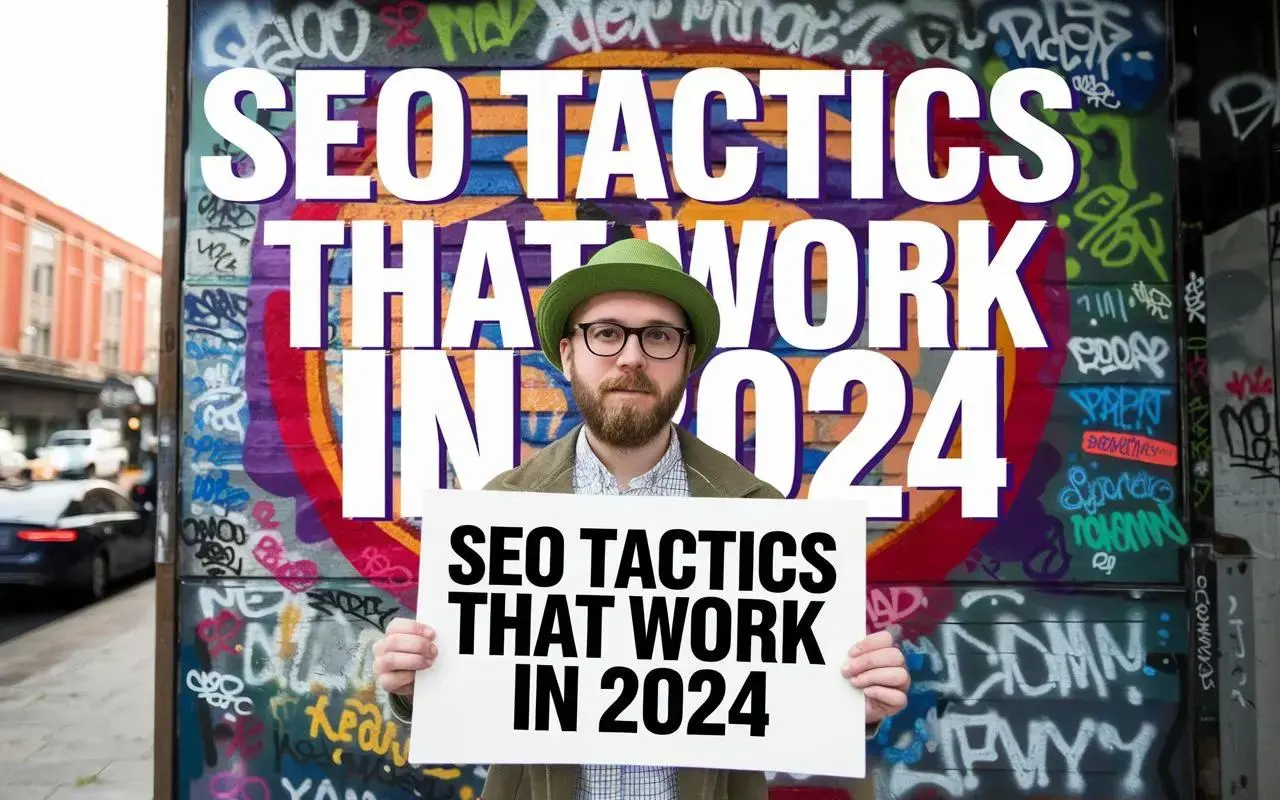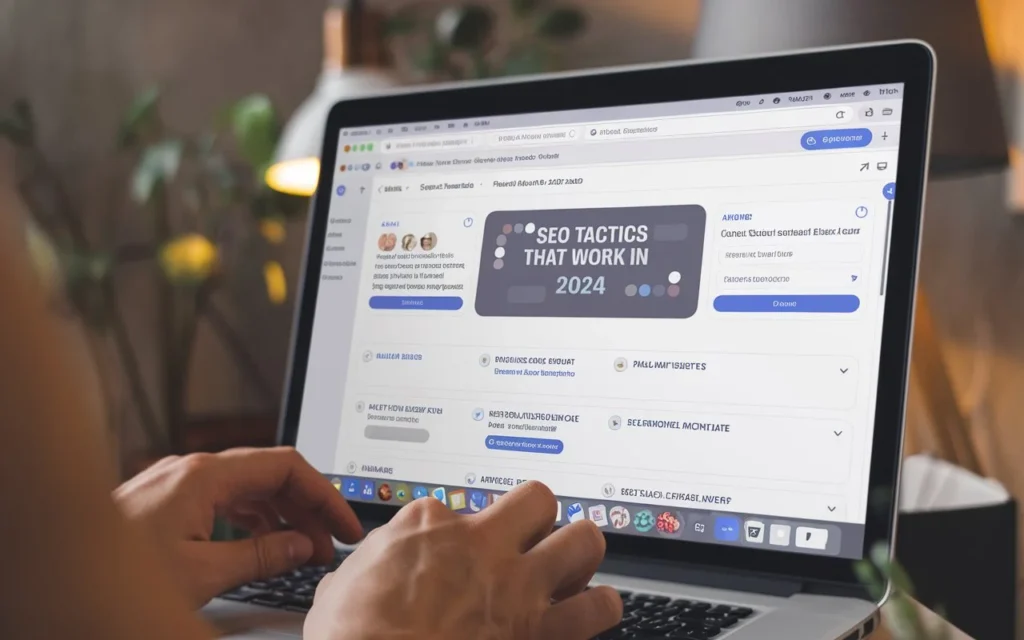Physical Address
304 North Cardinal St.
Dorchester Center, MA 02124
Physical Address
304 North Cardinal St.
Dorchester Center, MA 02124


SEO in 2024 isn’t just about ticking boxes on a checklist. It’s about understanding the constant evolution of search engine algorithms, user behavior, and technology trends. As a website owner, keeping up with these changes might feel like trying to catch a train that’s always speeding up. But don’t worry—I’m here to guide you through the latest SEO tactics that will keep you ahead of the competition this year.
First, let’s talk about Google’s 2024 algorithm updates. If you’ve been in the SEO game for a while, you know that Google loves to shake things up. What worked a couple of years ago might not cut it today. For example, I remember when keyword stuffing was all the rage. You could cram as many keywords into your content as possible, and Google would reward you with higher rankings. But try that now, and you’ll likely end up buried in the search results, or worse, penalized.
In 2024, Google’s updates are laser-focused on user experience. That means Core Web Vitals—those metrics that measure load time, interactivity, and visual stability—are more important than ever. If your site is slow or doesn’t provide a smooth experience, expect your rankings to suffer. Mobile-first indexing is another big deal. With most users accessing the web on their phones, Google now predominantly uses the mobile version of a site for indexing and ranking. If your mobile experience isn’t up to par, you’re likely missing out.
Gone are the days when SEO was all about stuffing your content with exact-match keywords. In 2024, the focus has shifted to understanding search intent—what users really mean when they type something into Google. I’ve seen this change firsthand. A few years ago, I was working on a blog that was struggling to rank. We were targeting all the right keywords, but the content just wasn’t resonating. It wasn’t until we started focusing on what users were actually looking for—solving their problems and answering their questions—that we saw a significant boost in traffic.
To get ahead today, you need to use advanced tools that incorporate AI and machine learning. Tools like Ahrefs, SEMrush, and Google’s Keyword Planner are great, but it’s how you use them that makes the difference. Instead of just looking for high-volume keywords, dig deeper into user intent. What questions are people asking? What problems are they trying to solve? For instance, I recently helped a friend optimize his eCommerce site. Instead of just targeting “buy running shoes,” we focused on “best running shoes for flat feet” and “running shoes for marathon training.” These long-tail keywords were less competitive and attracted more qualified traffic.
Once you’ve nailed down your keywords, it’s time to optimize your content. But remember, content isn’t just about text anymore. In 2024, multimedia elements like images, videos, and infographics are crucial. They not only enhance user experience but also improve engagement, which is a ranking factor.
I once revamped an old blog post by adding a video tutorial and some infographics. Not only did the bounce rate drop, but the time on page also increased, which told Google that visitors were finding the content valuable. And guess what? The post moved up in the rankings.

Technical SEO might sound intimidating, but it’s essential if you want your site to be found and ranked by search engines. Think of it as the foundation of a house—if it’s not solid, everything else you build on top will be shaky.
One time, I was working on a client’s website that had fantastic content, but it wasn’t ranking well. After a technical audit, we discovered a bunch of issues: slow loading times, broken links, and a lack of an XML sitemap. Fixing these technical problems made a massive difference. Within a few months, their traffic doubled.
Link building has always been a cornerstone of SEO, but in 2024, it’s not just about the number of backlinks; it’s about quality and relevance. I’ve seen websites with fewer but higher-quality backlinks outrank those with thousands of low-quality links.
Think of backlinks like votes of confidence from other websites. But not all votes are equal. A link from a high-authority site like Forbes or the BBC carries more weight than dozens of links from low-quality directories. I remember helping a small business owner who was frustrated because his site wasn’t ranking despite having lots of backlinks. When we analyzed his link profile, we found that most of the links were from irrelevant or low-quality sites. After focusing on building fewer but more relevant backlinks, his rankings improved significantly.
Off-page SEO isn’t just about link building; it’s about building your site’s authority and trustworthiness. This includes everything from social signals to online reviews. For example, I worked with a local restaurant that wasn’t showing up in search results despite being popular in the area. We focused on getting more positive reviews on Google My Business and engaging with customers on social media. The increased online visibility helped them move up in local search rankings.
It’s not enough to implement SEO tactics; you need to track their effectiveness. In 2024, data-driven decision-making is key. Tools like Google Analytics, Google Search Console, and SEMrush provide valuable insights into how your site is performing.
I once worked with a client who was fixated on increasing traffic. However, despite a significant traffic boost, their sales weren’t improving. After analyzing the data, we realized the problem wasn’t traffic—it was the bounce rate. Visitors were landing on the site but leaving quickly because the content wasn’t relevant. By improving content relevance and user experience, we not only increased traffic but also conversions.
SEO isn’t a one-and-done deal. It’s an ongoing process of tweaking, testing, and improving. Regularly updating your content, conducting A/B tests, and staying on top of algorithm changes are essential to maintaining and improving your rankings.
SEO in 2024 is about more than just keywords and backlinks. It’s about providing an excellent user experience, understanding search intent, and continuously adapting to the ever-changing digital landscape. By focusing on these strategies, you’ll be well-equipped to outrank your competitors and achieve your online goals. Remember, SEO is a marathon, not a sprint—consistency and adaptability are key. So, keep learning, keep optimizing, and watch your website rise to the top.